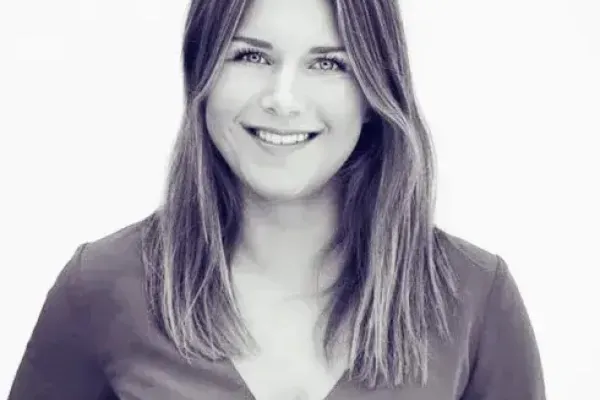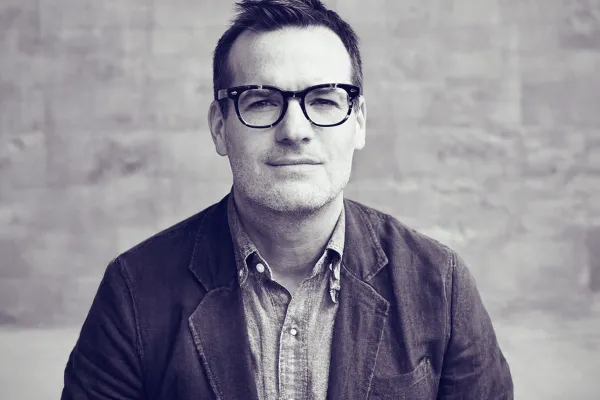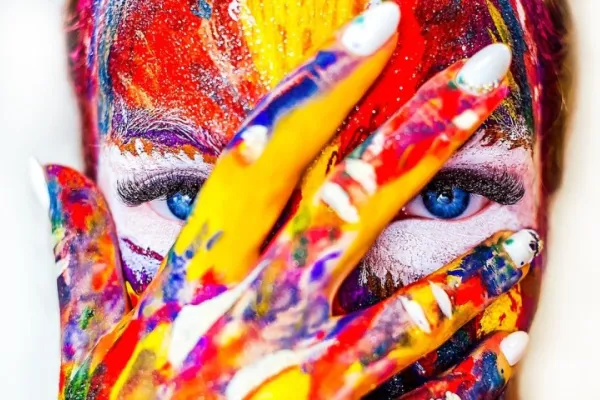
 Details
Details
This article is part of a series of interviews that NAI has conducted with the directors of publisher’s Native Ad Studios around the world. Please reach out if you want to add your Native Ad Studio to the series.
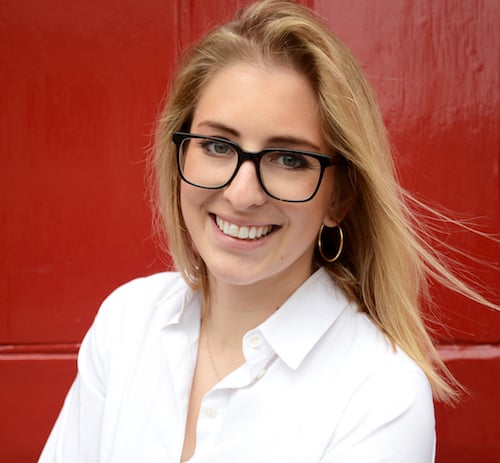
How does T Brand Studio create native advertising? What are their creative process and their most important learnings? And how did they manage to win gold for “Most Creative Native Advertising Campaign” in the Native Advertising Awards 2017?
We asked UK-based Raquel Bubar, Director at T Brand Studio at The New York Times, to let us in on the secrets behind the successful brand studio.
T Brand Studio: Creative Process
We approach branded content just like a newsroom would, thinking first about the newsroom story or the service journalism piece, that would resonate well with our readers.
What does an average creative process look like at T Brand Studio?
While there is no one-size-fits-all recipe for branded content, T Brand Studio focuses on storytelling. Our editors are journalists by training and they drive our programs – this is core to everything that we do. They approach branded content just like a newsroom would, thinking first about the newsroom story or the service journalism piece, that would resonate well with our readers.
Simultaneously our creative team thinks about making our stories personal, relatable and genuinely interesting for a New York Times audience.
It takes time to perfect a smart, beautiful piece of content.
How much and in what ways are the brands involved?
We take a collaborative stance when it comes working with brands. There is rarely a moment when a creative agency thinks up a great story in a single brainstorm.
RELATED: T Brand Studio: 12 Tips for Creating Killer Content
It takes time to perfect a smart, beautiful piece of content and by working together with brands we are better able to identify key characteristics that the brand stands for with our unique understanding of what works best for audience engagement.
If you aim to write stories that live up to the standards of the newsroom, you can make branded content that's more relevant to the wider publisher's ecosystem, drive more traffic, and in turn, lead to more engaged users.
What are the most important dos and don’ts when starting up a new creative native ad process?
We are constantly innovating our storytelling capabilities. But our greatest pitfall is when advertisers approach T Brand Studio requesting a menu of items: unique photojournalism, interactive data visualization, a VR or AR experience – rather than the thinking critically about the story first.
We have access to the leading global experts in the world, but if we film them sitting behind a desk for the sake of making a film, we lose out on the opportunity to create content that fits the story we’re trying to tell.
The dos are to read and internalize editorial content coming out of the newsroom. When creating branded content to live on a publisher's website, consider how it will appear alongside editorial, and what that means from a user's experience.
If you aim to write stories that live up to the standards of the newsroom, you can make branded content that's more relevant to the wider publisher's ecosystem, drive more traffic, and in turn, lead to more engaged users.
Identifying the perfect story
We meet not only the marketing teams and operations leads, but also the real people on the ground who are using and producing the products or services every day.
How do you identify the best brand stories to tell?
Some of our best ideas have come when we’re able to do what we do best: mine the best stories from within a brand and amplify it with our storytelling capabilities.
As creative storytellers, we actually offer a product called Storymining, which allows us to embed a T Brand Studio journalist and a content strategist inside a brand to help identify the best stories. We meet not only the marketing teams and operations leads, but also the real people on the ground who are using and producing the products or services every day.
RELATED: A Successful Native Advertising Campaign Starts at the End
For example, we launched a program for Volvo that was based almost entirely on the story mining process. Through the program, we learned of their specialized team of crash test experts who will quickly get to to the scene of a real crash that's happened on the road to investigate, learn and strategize how to improve the safety of each vehicle.
We would never have known about this story if it hadn't been for our embed process – allowing us to speak with every department inside a company and ask them questions what stories they have to tell.
Another key element to consider when finding the great story for brands is the human element. How can you make a brand story relatable? Who will you profile to make the piece authentic? What experiences can your profiles share that make an otherwise traditional messaging document, come to life? We are constantly encouraging our clients to identify stories that are real, human and emotional.
Through storytelling and measurement, we can find the sweet spot in which stories really take shape.
How do you to find the right angles in those stories that will resonate with the audience?
We use both our editors who have a journalism background, as well as key metrics and analytics based on our audience engagement with content across The New York Times to figure out the best stories to tell on our platforms. Through storytelling and measurement, we can find the sweet spot in which stories really take shape.
RELATED: 4 Tips for Using Data Creatively to Produce Original Content
More recently, we are using analytics and measurement of audience engagement to inform the stories that our creative studio develops for brands. We can now examine the most popular and most engaged with topics published by our newsroom (likes, shares, comments) and, based on these insights, we can recommend stories about particular subjects that we know will work well with our audience.
These insights are helping us to inform the right angles that we take with our concepts.
In the past few years, we’ve made a conscious effort to expand our expertise beyond traditional digital advertising.
What is the relation between innovation and creativity? How can you think more innovatively?
In the past few years, we’ve made a conscious effort to expand our expertise beyond traditional digital advertising. With our acquisition of the experiential agency, FakeLove, and our influencer marketing agency, HelloSociety, these integrations on and off our platform allow us to broaden our content development and distribution capabilities to push us to more creative executions for our brand partners both online and off.
We are thinking beyond digital-only content campaigns, and are moving towards integrated programs that merge digital, experiential and influencer-driven content.
In a recent T Brand campaign for Stella Artois, we partnered with a series of influencers to develop events, high-quality films and other digital content to capture their theme of, "Host one to remember."
We produced one event in which we collaborated with an eating designer and influencer to craft an immersive, live event encouraging attendees to closely examine how we eat together. The film showed people eating with their wrists tied to each other, so they could learn how to truly experience a meal together. The content was amplified across social media and NYT properties to give it that 360 approach.
It's all about getting the client to talk about a story that's great than themselves. Beyond their products or services.
Does courage play a role in being creative? How?
It's all about getting the client to talk about a story that's great than themselves. Beyond their products or services. How can we make them think about their larger goals and values that impact society? That's where the risky, but impactful story lies.
Our most successful programs have come from our partners that are willing to take risks.
RELATED: How Publishers Can Convince Brands to Tell Authentic Stories
When we partnered with Philips, we encouraged them to talk about topics rather than their products, which allowed us to reposition them as the leading healthcare provider in the world. Capturing innovative stories through film, we profiled a fisherman in Iceland plagued with sleep apnea, the oldest living karate master in Japan and a determined cyclist struggling with COPD. Our content saw incredible results, both promoted and organically, across our readers on The New York Times and social media.
In what ways do data have a place in the creative process?
While data isn’t everything when it comes to great storytelling, we are using it more than ever to identify which stories we should tell our audience. Looking at engagement rates and interactivity across newsroom content, we then use these insights to inform the topics we recommend that our brands should prioritize for our audience.
RELATED: 3 Data Myths that Native Advertisers Need to Stop Believing
We've recently launched a cross-functional team that builds data and technology solutions for brands using the same tools and insights that power The Times. It’s an exciting time for us to combine the power of insights and storytelling for our partners in a new way.
What important learnings would you pass on to other branded content studios who strive to be even more creative?
It’s easy to fall into a place where you churn out content quickly that a brand asks for in their RFP (Request For Proposal, ed.), but it’s much harder to advise your clients on the right story to tell – whether or not it fits with their original brief.
We are constantly pushing brands to think beyond their primary communication materials and pursue content that will truly resonate with their target audience.
Winning a Native Advertising Award
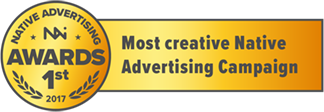
It helped our recognition in the international community for our creativity and success around the world.
You won a Native Advertising Award 2017 for “Most Creative Native Advertising Campaign” for your UBS campaign. What has this prize meant for T Brand Studio?
We are constantly challenging ourselves to think creatively, so when we received this award it helped our recognition in the international community for our creativity and success around the world.
We knew artificial intelligence was a priority for the brand, but it wasn't necessarily the products we wanted to profile.
The campaign grew awareness of UBS' "Nobel Perspectives" content and engaged High-Net-Worth individuals. In the piece you created, you had implemented the Chatbot Rose, a five-chapter article and a short documentary-style video. How did you come up with the idea for this particular campaign?
It was a collaborative effort between T Brand, UBS and Spark Foundry in which we aligned our content closely with their Nobel Perspectives campaign. But rather than focusing on every member of their elite group, we focused solely on Herbert Simon, the father of AI, because we knew this would be a compelling topic to discuss.
RELATED: The Role of AI in Native Advertising - and How to Use it Effectively
We knew artificial intelligence was a priority for the brand, but it wasn't necessarily the products we wanted to profile. Instead, we wanted to find a way to talk about the subject that fell in line with UBS values, as well as their Nobel Perspectives campaign.
We wanted to create a journalistically led piece for UBS about innovations in AI around the world. We sent a film crew to Tokyo to interview the leading professor in robotics. Simultaneously we incorporated Rose – a human-like chatbot – to allow users to interact with AI directly on the page.
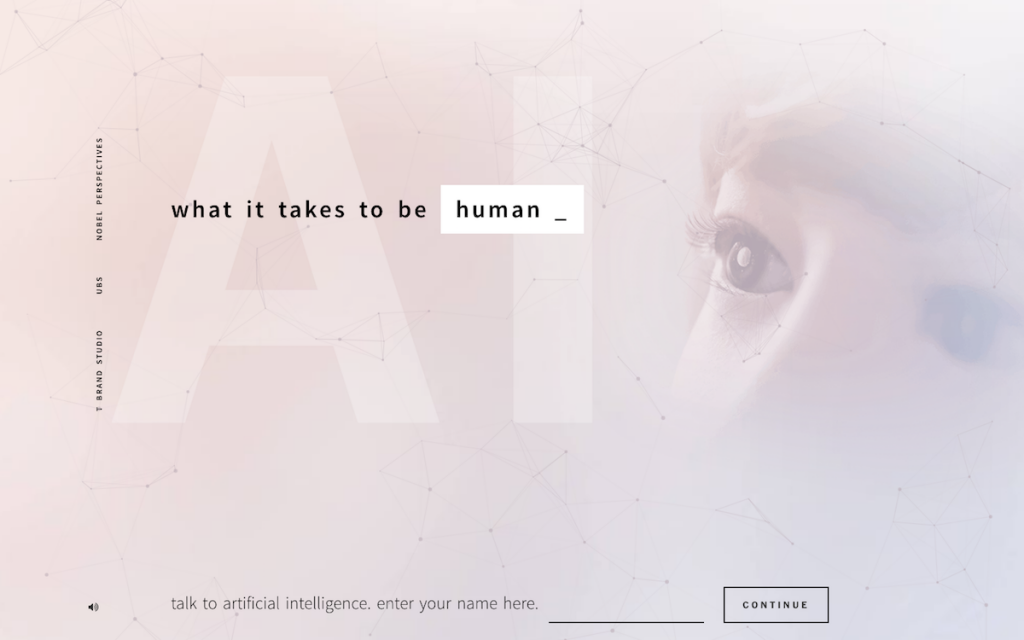
We learned that content that goes beyond traditional brand guidelines has a lasting impact.
What have you learned from the campaign you did for UBS?
We learned that content that goes beyond traditional brand guidelines has a lasting impact. We learned that thinking like a newsroom, and searching for that compelling story, leads to strong engagement.
We learned that readers are willing to spend several minutes engaging with compelling content that told a story beyond typical products or services that UBS provides.
We blew away our typical benchmarks for branded content as readers interacted with Rose and watched the film. It went on to receive several awards including the Native Advertising Institute award for Most Creative Native Advertising Campaign, as well as awards from Drum and OMMA. We are incredibly proud of this campaign.
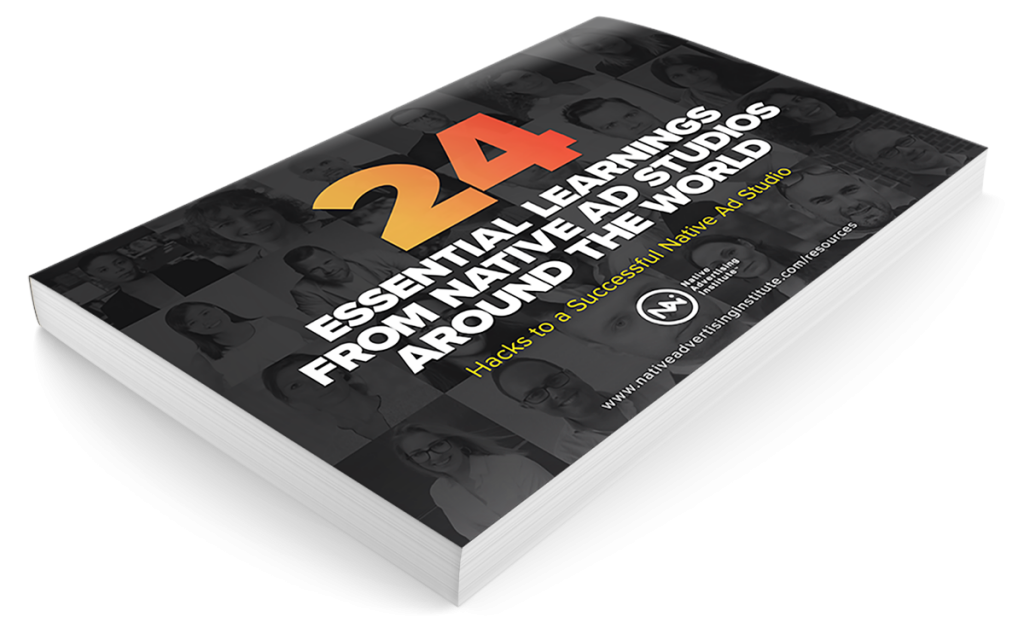 Download "24 Essential Learnings from Native Ad Studios Around the World"
Download "24 Essential Learnings from Native Ad Studios Around the World"

